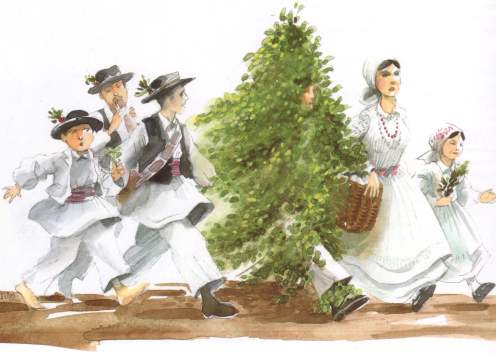
#FolkloreThursday Thread: Looongish, but hopefully interesting...In it I will talk about ferns, feathers, thunder gods and thunder god names...
Ferns are a very ancient family of plants: early fern fossils predate the beginning of the Mesozoic era, 360 million years ago...
Ferns are a very ancient family of plants: early fern fossils predate the beginning of the Mesozoic era, 360 million years ago...

They are older than the dinosaurs. They were thriving on Earth for two hundred million years before the flowering plants evolved.
The English word fern comes from the old Anglo-Saxon "fearn" meaning feather.
The English word fern comes from the old Anglo-Saxon "fearn" meaning feather.

Like feathers, the leaves of most ferns are delicate and divided. So fern literally means plant that looks like a feather...
The cognates are found in Germanic, Slavic, Baltic, Indo-Iranian and Albanian languages and officially all come from the PIE root "*pornóm" (wing, feather) which comes from PIE root "*p(t)erH-" (fern)...(I will talk about why I think this etymology is crazy later 🙂)
Ferns are non flowering plants. But, according to the lore found in Slavic, Baltic and Germanic folklore from Russia to England and from Estonia to Serbia, people once believe that ferns did flower...
But only once a year. On the eve of the Summer solstice (St John's eve). The flower appeared and disappeared almost instantly, so the gatherer had to be lucky in order to be at the right place at the right time, and quick in order to pick the flower before it vanished...
The fern flower was believed to bring fortune to the person who finds it. In various versions of the tale, the fern flower brought luck, wealth, ability to defeat demons, fulfill wishes, unlock secrets, and understand the language of animals and trees...
But getting this flower was not easy. As a matter of fact it was an almost impossible task. And very very dangerous. Because the flower was closely guarded by evil spirits, or devil himself...They did all they could to prevent the gatherer from obtaining these "fiery blossoms"...
Most commonly the evil guardians of the fern flower put the gatherer into a magic sleep, so he could not see the flower blooming, and therefore could not pick it...
But the evil spirits / devil also caused the earth to rock, lightning to flash, thunder to roar, flames to surround the gatherer...So success in obtaining the magic fern flower was rare...
It is interesting that "the evil spirits / devil" used lightning and thunder to protect the magic fern flower from being picked...Why? Because it gives us a clue who these "evil spirits / devils" were actually...
In the past in England, ferns were known as Devil Brushes. Devil here being the old Thunder God. Why do I think so? Because it was believed that "fern keeps the devil away"...
"In the place where fern grows the devil rarely practices his glamour. He shuns and abhors the house and place where fern is, and thunder, lightning, and hail rarely fall there"...
In England, people also believed that it may rain when the ferns are cut or burnt. Just like in Poland, where it was believed that plucking of fern produces a violent thunderstorm...
This was because, fern, "being rooted and transformed thunderbolt, resumes its pristine nature, when the plant that contained it was taken from the ground"...
That in Slavic mythology ferns were associated with the thunder god Perun and that he was "The Devil" protecting the fern flower, can be seen from this Serbian and Croatian beliefs related to ferns...
There is a Serbian legend about ferns and St Sava (patron saint of Serbia who is credited with defeating the old devils (read: old gods), but who in process acquired all their attributes)...
Once St Sava was walking across mount Rudnik. On top of the mountain, he blessed what he saw before him. This is why ferns don't grow on that side of the mountain. But he forgot to bless what was behind him, so this is why ferns still grow on that side of the mountain...
That it was Perun, who made the ferns grow on the unblessed side of the mountain, and who protected the magic fern flowers, can be seen from the fact that "...they were called among the Croats by the name of Perenovo Tsvetje" (Perun's Flowers)...
In some parts of Europe, like Russia, Ukraine, Belarus and Poland, it was couples who went into the woods searching for the fern flower on the eve of Ivan Kupala Night (Summer Solstice eve)...
The girl went into the wood wearing a flower wreath on her head. If when the couple came out of the woods, the boy was wearing the girl's wreath, it meant that the couple was "engaged to be married" 🙂...
This lead many to believe that "seeking the fern flower" was just an euphemism for sex. Because everyone knows that ferns don't flower...Weeeeell...
There is one fern which is known as flowering fern: Osmunda regalis, the royal fern. Osmunda regalis is a species of deciduous fern, native to Europe, Africa and Asia, which grows in woodland bogs and on the banks of streams... 

It produces clumps of red fronds which look like flowers and its "bloom time" is May - August. Summer. Peaking in midsummer...How curious...So far so good. Now it gets interesting 🙂
It is uncertain where exactly the name "Osmunda" came from. But the story which is all over the net, suggests the name Osmunda comes from Osmund(er) (from "Os" meaning God and "mund" meaning protector), which was another name of the Norse Thunder god Thor...
I couldn't find any actual written source for the link between Osmund and Thor, except this: books.google.ie/books?id=cAo3A…. Equally I couldn't fine any written link between Osmun, Osmunder and Osmunda fern...If you know of any written source sighting these links, please post it here...
Anyway, the important thing is that this fern was also linked to a thunder gods...The "evil spirits / devils" who protect the fern flower...
So... Is then the Osmunda regalis, the royal fern, the flowering fern from the legends?
So... Is then the Osmunda regalis, the royal fern, the flowering fern from the legends?
It "flowers" during the midsummer, so that matches. It has fiery (red, orange) flowers, so that matches too...But I don't think that the fronds of the Osmunda regalis were the infamous fern flowers...
Why? Because this fern grew everywhere. It flowered for months...Its flower wasn't extremely difficult to find and it didn't just appear in a flash and disappear in a flash... Picking royal fern flower wasn't life threatening...It was actually piss easy...
So what then? Well, what if, the fern flower wasn't a fern flower at all? What if it only looked like fern (flower)?
If only there was something that looks like a fern and is somehow associated with thunder and thunder gods...Weeeell there is...
If only there was something that looks like a fern and is somehow associated with thunder and thunder gods...Weeeell there is...
Lichtenberg Figures (named after the German physicist who discovered them) are branching, fern like, electric discharges (or electrical trees) that are sometimes preserved on the surface or the interior of a solid dielectric... 

Interestingly, reddish Lichtenberg figures type scars are also left on the skin of people struck by lightning...These scars, which may persist for hours or days, are used as the indicator for the cause of death by lightning strike... 



They are thought to be caused by the rupture of capillaries under the skin due to the passage of the lightning current or the shock wave from the lightning discharge as it flashes over the skin. How cool is this?
Wow, right? Here is the best bit: Lichtenberg figures type scars caused by lightning strikes are sometimes called "lightning flowers"....Ta Ta Taaaaaaaa!!!! 🙂
Are these fern shaped lightning marks the reason for the linking of ferns with thunder and thunder gods? The reason why people believed that ferns were actually lightning bolts that took root? Lightning bolts which get released when the fern is burned?
Also, are Lichtenberg figures "The Fern Flowers"? The magic ones, that are almost impossible to find? I mean, picking a "flower the Perun's flower" aka lightning, is extremely dangerous. Also "finding" this "flower" is not easy and only extremely lucky people can obtain it...
Well, extremely unlucky to be hit by lightning, but also extremely lucky to survive it. The Perun's flower also appears and disappears in a flash...And even if you catch it (you get hit by a lightning, get the fern shaped scar and survive) the scar disappears soon afterwards...
Also, look at this. Thunderstorm frequency in Europe per month. The peak thunderstorm season is centered around summer solstice, midsummer...Right when you are supposed to go looking for "Perun's flower"... 

So...Did we solve the mystery of the fern flower? I think so...But this is not the best bit... 🙂
As I said already, fern is shaped like a feather, hence its name, fern (feather). The Lichtenberg figures, which are shaped like ferns are then also shaped like feathers...Lichtenberg figures which are produced by a touch of the thunder god...
Ok...Where are you going with that?
Ok...Where are you going with that?
A question: Why is Perun called Perun?
Perun is strongly correlated with the near-identical Perkūnas/Pērkons from Baltic mythology. To the point where it is not clear where one stops and the other starts...
Perun is strongly correlated with the near-identical Perkūnas/Pērkons from Baltic mythology. To the point where it is not clear where one stops and the other starts...
We also have Finnish Perkele, another name for the Finish Thunder God Ukko. Perkele is considered to be a loan from Baltic languages...
Then there is Albanian Perëndi, the god of thunder and storms. And his wife Prende, Prenne, who has a rainbow as her belt. Probably a loan from the South Slavic mythology, where we find Perun, the god of thunder and storms, and his wife Perunika, who has a rainbow as her belt...
Then we have Indian Parjanya (Sanskrit: पर्जन्य parjánya), who is, according to Veda, a deity of rain, thunder, lightning, and the one who fertilizes the earth...In Vedic Sanskrit, the word "parjanya" actually means rain, raincloud...
Thracian Περκων/Περκος, (Perkon/Perkos) could also be related. And even the names Fjörgynn, an alias of Odin, and Fjörgyn, the name of the mother of Thor, have been proposed as cognates...
It is believed that there was once a Proto-Indo European thunder god whose original name has been reconstructed as Perkwunos...Which according to the etymological dictionaries comes from PIE perkwus, meaning "oak" or "mountain"...
So that would make Perun the oak god, mountain god...Which in fairness, he is. Oaks and mountains are indeed associated with Perun...Oak is his holy tree and he was celebrated on mountain tops...
Lightning hits oak trees far more frequently than other tree species. Oaks are usually some of the tallest trees in the landscape. They are also more conductive thanks to their higher moisture content and the vast number of water-filled cells running up and down their trunks...
Lightning is an electrical discharge that occurs between clouds or between clouds and the earth. And most often, such discharges hit the nearest, and therefore, the highest places on the ground. Which is why "mountain peaks attract lightning"...
But I don't think that the name Perun is derived from the word that means oak or a mountain...If anything, oak and mountain are probably named after the thunder gods: Thunder god's tree and Thunder god's favorite hangout 🙂
I would here like to propose another possible root for all these thunder god names which start with "Per", and that is PIE "*perH-" meaning feather, wing, to fly but also fern, a feather, wing like plant...
This root is best preserved in Proto Slavic "*pero" (feather) and its descendants, but we find cognates in Lithuanian spar̃nas (wing), Albanian "fier" (fern), Proto-Germanic "*farn" (fern), Proto-Indo-Iranian "*parnám" (feather, wing, leaf)...
As I already mentioned at the beginning of this article, official etymology of all these words is: from PIE root "*pornóm" (feather, wing, fern, leaf) which comes from the PIE root "*p(t)erH-" (fern)?????
This makes absolutely no sense. You mean people looked at feathers, wings, all the different leaves on all the different trees, and said: they all look like ferns??? When even today we say that ferns look like feathers...Not that feathers look like ferns...
Anyway, the important bit is, that if "per" (feather) was the root of the the name Perun, that would make Perun "the feathery one"...The winged one...Which would neatly explain the fern--thunder god flower--thunder god link found in folklore...
This is where I arrived when I first started pondering all this, many years ago...And this is where I stopped. Because as much as all this looked logical to me, I just couldn't make myself go out in front of the people and say "Behold the holly chicken"!!!
Even though cockerel is the bird sacred to Perun...And is used in magic rituals performed to protect the house and fields from lightning...Also, ever wondered why cockerels are used as weathervanes? oldeuropeanculture.blogspot.com/2017/01/cocker… 
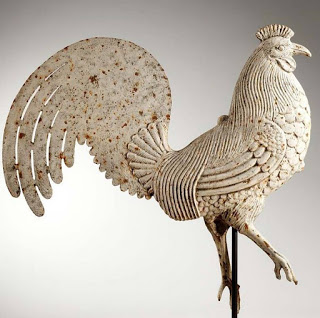
Then I came across the legend about the Firebird...In Slavic folklore, the Firebird (Russian: жар-пти́ца, Serbian Žar Ptica...) is a magical glowing bird which is both a blessing and a bringer of doom to its captor...oldeuropeanculture.blogspot.com/2020/11/firebi… 

The Firebird is described as a large bird with majestic plumage that glows brightly emitting red, orange, and yellow light, like a bonfire that is just past the turbulent flame...
Its feathers do not cease glowing if removed, and one feather can light a large room if not concealed. Sounds familiar?
I believe that the fire bird story is an amazing description of the man's quest for fire before people invented the way to light it themselves...When only thunder gods knew how to do it...
Fire bird represents the fire that comes from the sky, from the clouds, the electricity, the lighting that flickers and flashes in the clouds during storms...Lightning which looks like feathers, wings of a giant glowing bird... 

Sometimes the fire bird flies down from the clouds to nest. This is a lightning striking the ground. The nesting fire bird is a burning bush or a tree struck by a lightning...
What is left after the fire bird ascends back to heaven are a few or just one of her feathers, magic feathers which can light up the whole room. Burning branches? 

Still I wasn't sure...Then, while I was analyzing various animal calendar markers, I came across this double headed eagle dude from Bactria oldeuropeanculture.blogspot.com/2020/03/double… 

This artifact led to discovering the link between vultures mating season and the rain season in Mesopotamia, Western Iran and Central Asia...
oldeuropeanculture.blogspot.com/2020/07/fluffy…
oldeuropeanculture.blogspot.com/2020/07/fluffy…

Ninurta/Ningirsu, Sumerian thunder god, is the oldest thunder god we know by name. He was depicted either as a lightning trident wielding warrior or later as a warrior armed with a bow and arrow...
But in the earliest times Ninurta/Ningirsu was imagined as a huge black bird, with outstretched wings...An eagle (vulture)...Or a black thunder cloud...Ninurta/Ningirsu was The Feathered One...Perun...
Later on he became the eagle headed winged dude, then just a dude associated with eagles...Like Zeus, Jupiter, Perun...
So...Finally I was sure...Perun, Perkunas, Perkele, Perendi, Parjánya...The IE names of the same god covered in feathers of fire and light...The one whose touch leaves marks on the skin in a shape of a wing, feather, fern...What do you think?
I can hear people saying: wait wait wait...How can you link Neolithic Mesopotamian thunder gods with European thunder gods??? Too much geographic and temporal distance...To which I would say: remember the goat of rain?
In Eastern Mediterranean, Mesopotamia, Iran, Central Asai, Ibex mating season coincides with the beginning of the rain season...Which is why during the Neolithic, ibex was the most depicted animal in these lands. Ibex, The Goat of Rain, whose mating dance brings rain... 

Then The Goat of Rain, became a goat dude, a dude with goat horns... oldeuropeanculture.blogspot.com/2020/12/stride… 



Then a dude whose sacred and sacrificial animal was goat... The "goat man", with same goat horns wearing sae big elf boots, with his goat(s), 4th millennium BC Qazvin, Caspian coast, Iran... 

We find the same evolution in Europe. In Minoan Crete we find The Goat of Rain associated with winter, rain, water, vegetation and the tree of life... oldeuropeanculture.blogspot.com/2020/02/goat-r… 
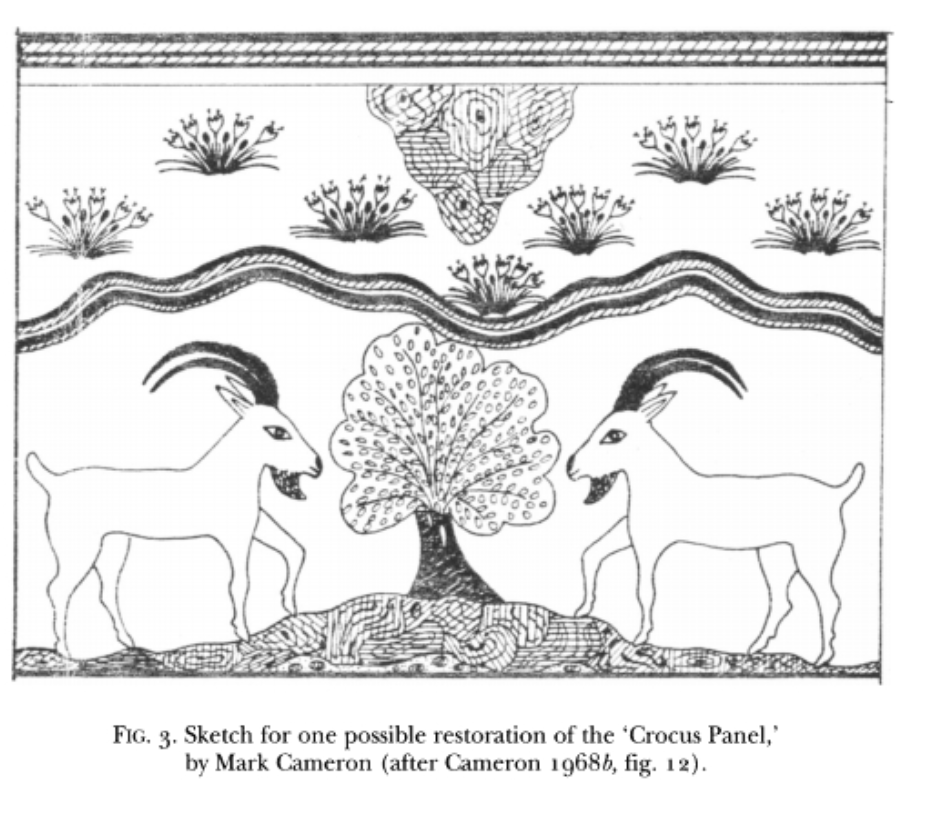
Then we find Pan, the goat man, associate with rain, water and vegetation...oldeuropeanculture.blogspot.com/2020/12/pan-go… 

Eventually we find Zeus being suckled by goats, riding on a goat, wearing a magic goat skin...And we find cornucopia, the goat horn of plenty oldeuropeanculture.blogspot.com/2020/03/cornuc…
Until finally we find Thor, Perkunas and Perun riding in goat pulled chariots and having goats sacrificed to them...
oldeuropeanculture.blogspot.com/2021/01/krampu…
oldeuropeanculture.blogspot.com/2021/01/tanngn…
And finally the devil...
oldeuropeanculture.blogspot.com/2021/01/krampu…
oldeuropeanculture.blogspot.com/2021/01/tanngn…
And finally the devil...
So when it came to goats and thunder gods, geographic and temporal distance meant diddle...We can trace the goat aspects of our European thunder goats straight back to Neolithic farmers of the Fertile Crescent...
By the way did you know that Ninurta/Ningirsu was also associated with goats? Storm (rain) god Ninurta, was, in the earliest records, also agriculture god...Whose symbol was the the plough...Which he gave to the people... 
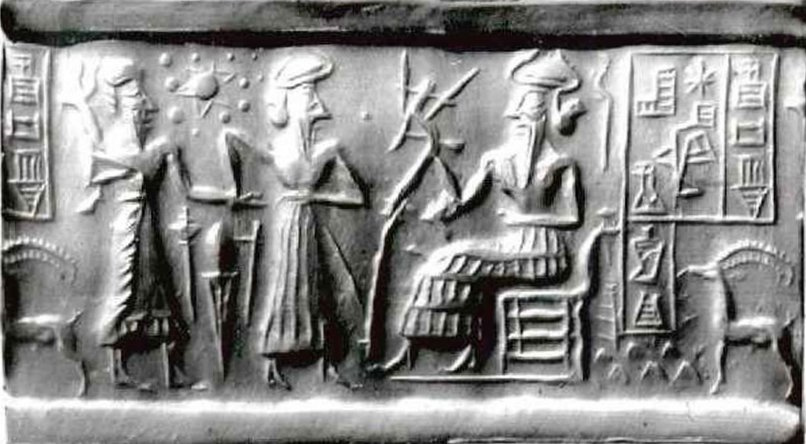
Why? Because in Mesopotamia, ploughing is done after the first rains, which arrive in Oct/Nov, when Goat of rain starts mating...Which is why we see (Ninurta) giving plough to the people...With the goat of rain next to the throne...
And that the eagle dude I talked about earlier was depicted holding "winged" ibex goats...From a Bactrian seal, end of 3rd beginning of 2nd millennium BC...
While our elf goat dude was depicted wearing eagle skin and wings around his neck...

While our elf goat dude was depicted wearing eagle skin and wings around his neck...
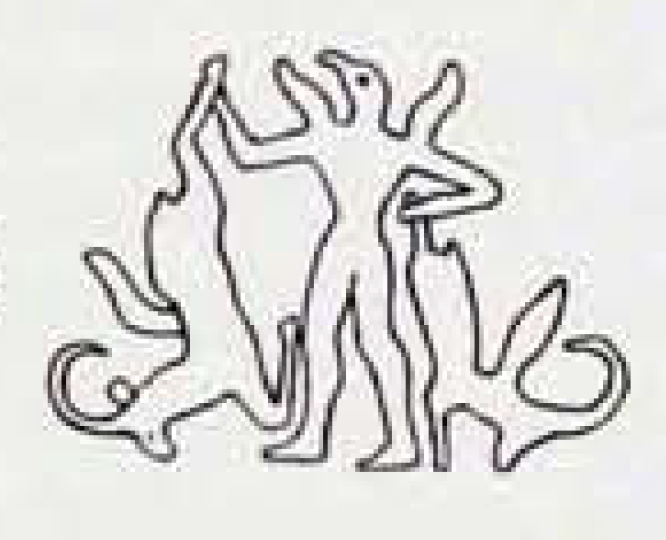
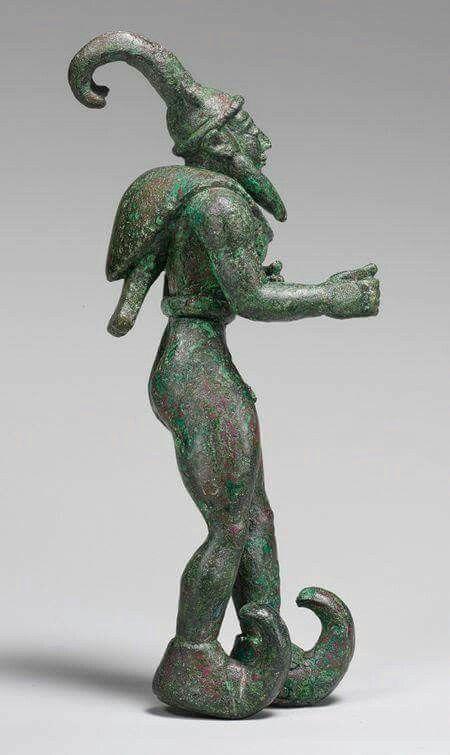
Just so we know that the eagle dude and the goat dude are one and the same dude...Thunder, Rain God...The Feathered one...The Winged one...The rain cloud...Bactrians actually spelled it for us in the 3rd millennium bc. Clouds...In a shape of an eagle dude and his goat... 
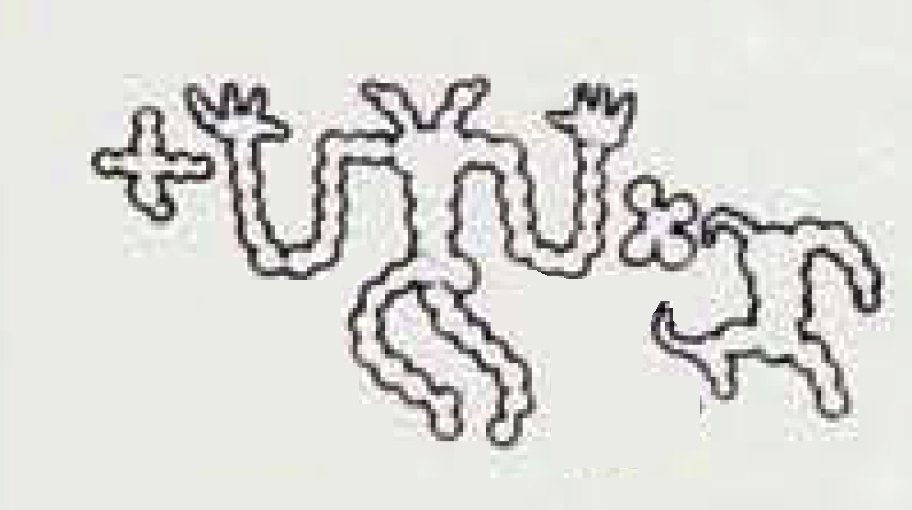
These two are tightly linked because both animals were used as calendar markers for "the arrival of rain", which then became "the arrival of the thunder god who brings rain"...
Which is why I believe that Perun was originally "The Feathered One", the great black eagle with outstretched wings which announces the arrival of rains...Vulture areal display which takes place at the beginning of the rain season. And what it looks like from the ground... 



This great Thunder Eagle later became The Feathered One, The Winged One, The Eagle Dude...And even later he became The Thunder God associated with eagles...With a name whose meaning everyone forgot...
That's it folks...I hope you found it interesting...Links to texts with fern folklore references (and a lot more interesting stuff) can be found at the end of my blog post which contains this text... oldeuropeanculture.blogspot.com/2019/09/pero.h…
More about eagles and goats found in ancient cultures, start here oldeuropeanculture.blogspot.com/p/animal-solar… then for the rest of the blog posts I still didn't add here, browse my blog, and for the threads I still didn't convert to blog post, check my twitter account. Have fun...
About eagle calendar marker, its spread across Eurasia and the meaning depending on different local climates oldeuropeanculture.blogspot.com/2020/08/eagle-…
• • •
Missing some Tweet in this thread? You can try to
force a refresh


